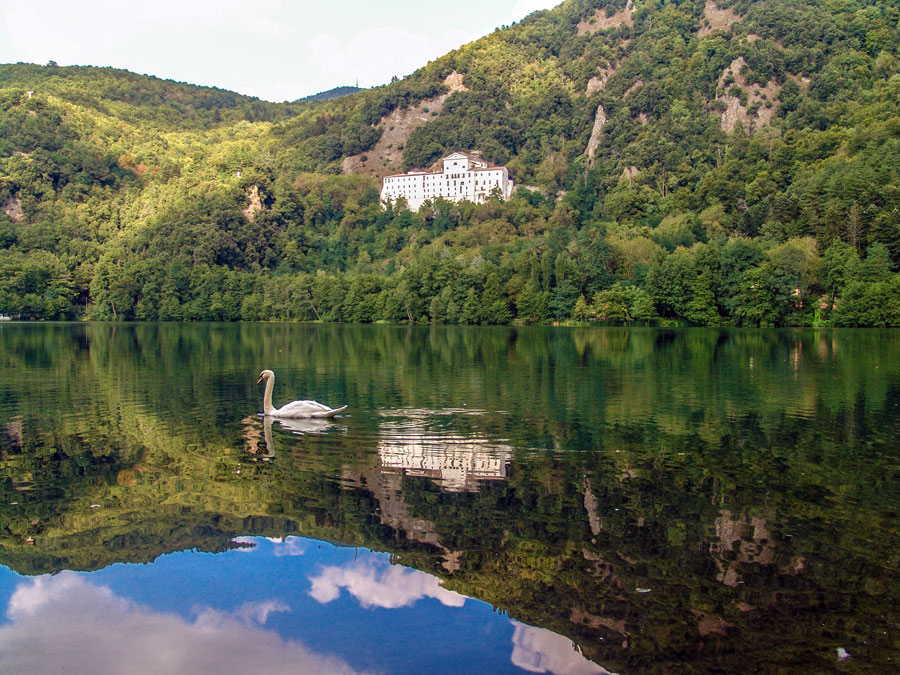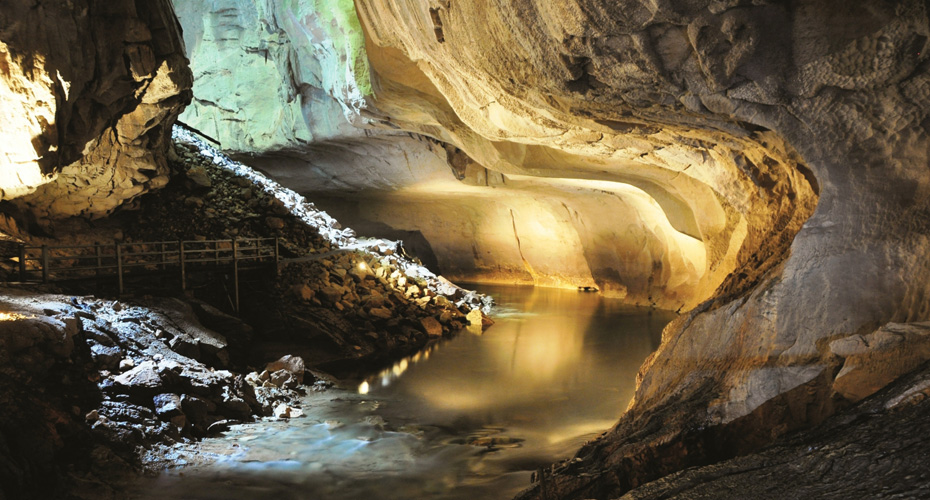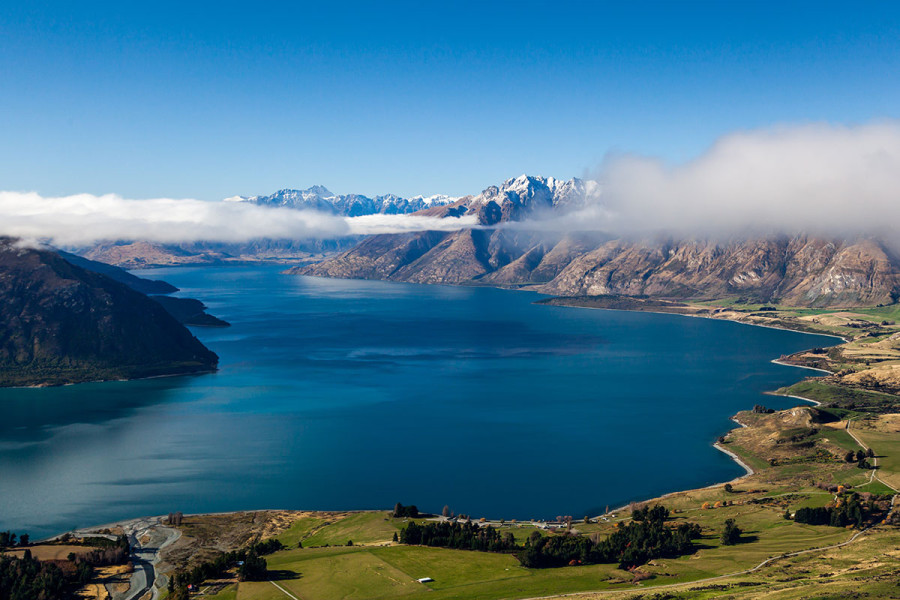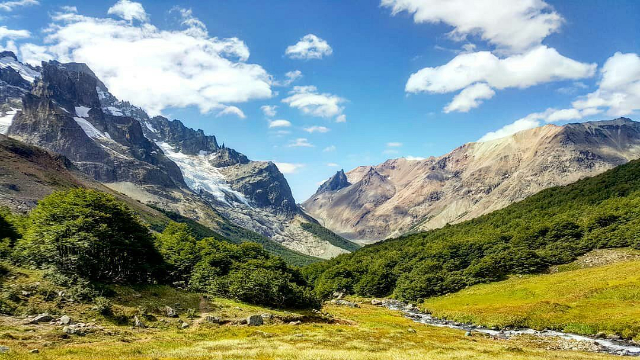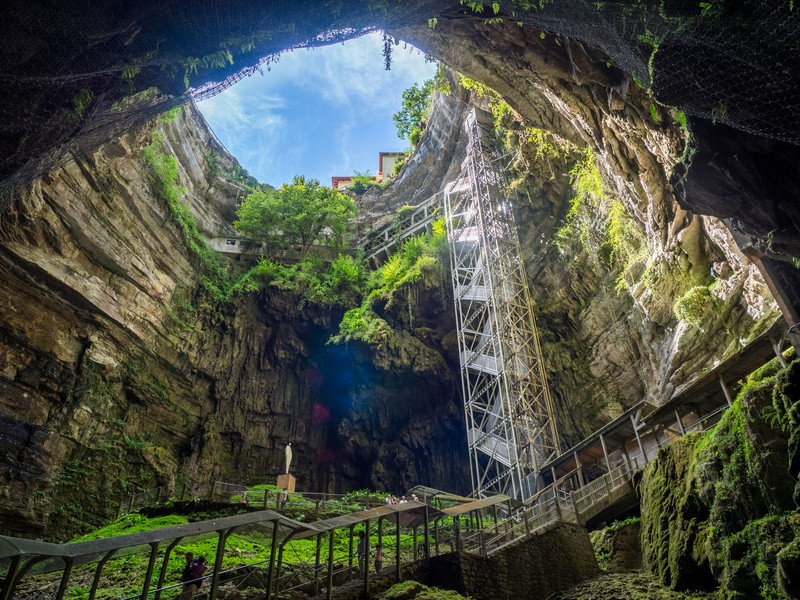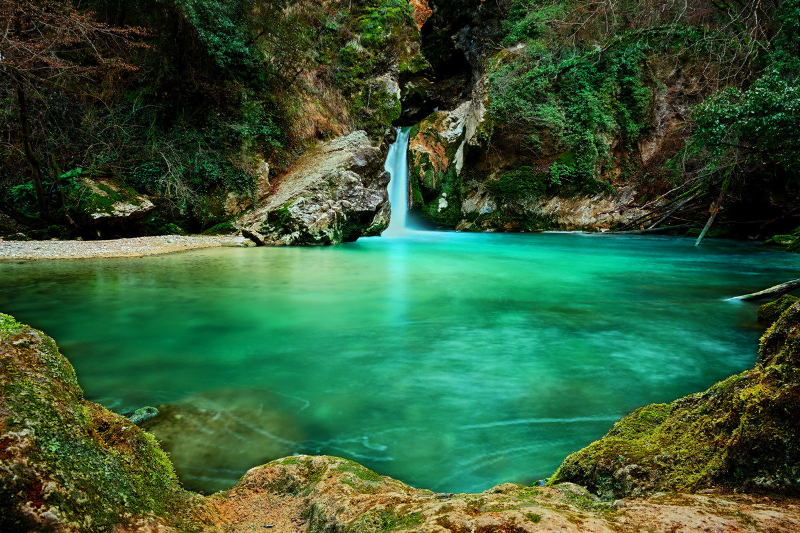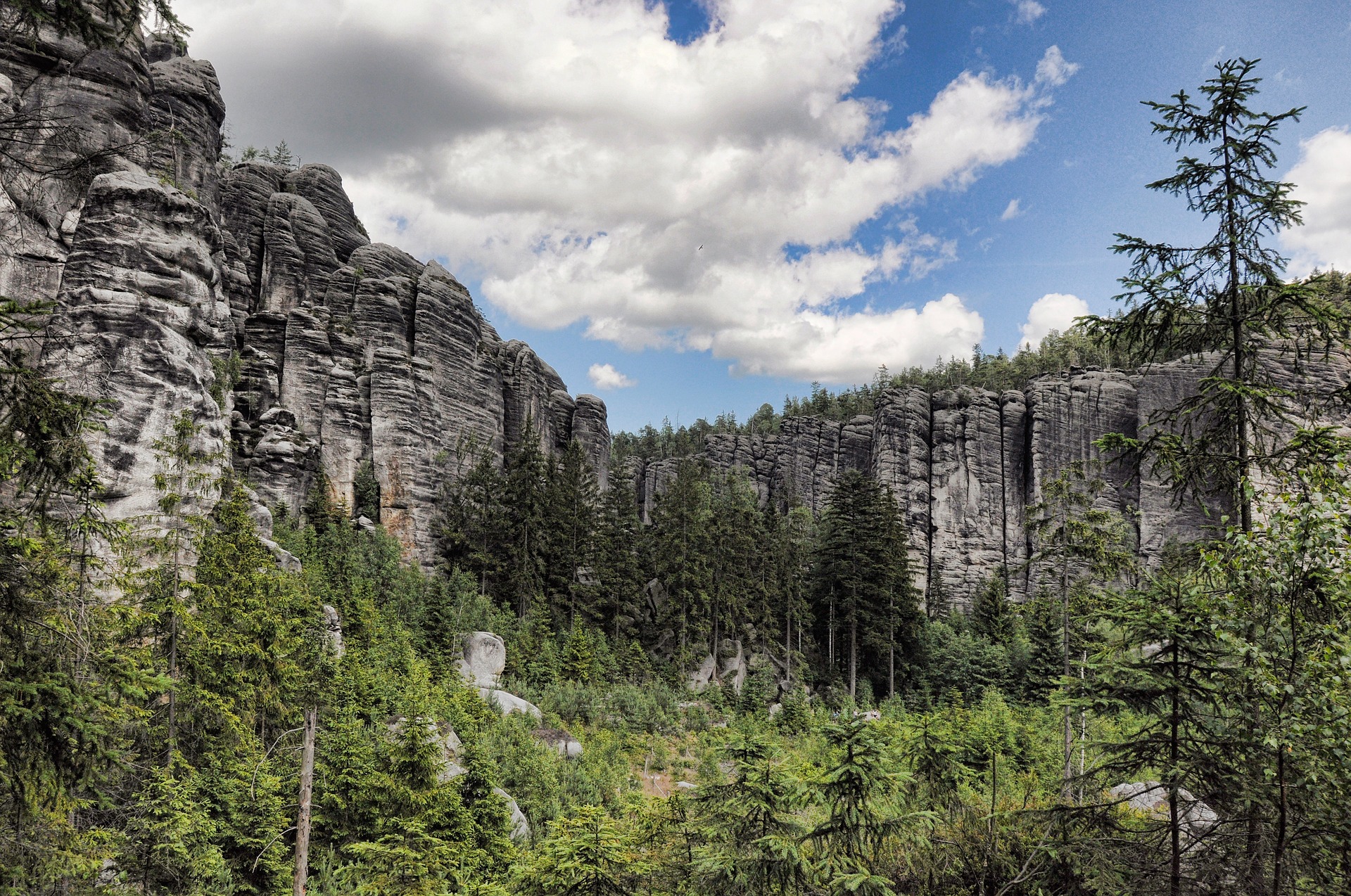The Small Lake has very steep shores, and is about 38 m. deep. The Big Lake, on the other hand, occupies a funnel-shaped cavity , with rather flat shallows that only in the northern part become a 36-meter-deep pit. The Small Lake is fed by a number of springs that from it, through a stream, feed the Big Lake, located at a slightly lower elevation. From Lake Grande, the waters flow into the Ofanto River, attrverso an outfall that in summer is often dry.
Monticchio is the only place in the Meridione region where the water lily, Nimphea alba, takes root and vegetates spontaneously; The large floating leaves are held on the bottom by stems up to 4-5 m. long and emerge to the surface in spring. Aquatic organisms benefit from them and grow faster than lakes without them. A lake without plants is generally a lake devoid of life.
The forests surrounding the lakes are of significance because they have created the ideal habitat for a species of nocturnal butterfly believed to be absent in Europe. In fact, in 1963 scholar Frederick Harting discovered in the woods of the Vuture a species of butterfly new to science, a genus believed to be absent in Europe. The Brahmea (Acanthobrahmaea) whose ideal habitat is located at lower elevations, where the woods border the Ofanto River and the fiumara di Atella, has made the area of relevant interest to ornithology enthusiasts. The Bramea, a moth, has a stocky body, not very bright colors and patterns on its wings, which perfectly camouflage it with the logs on which it rests. The 209-hectare Grotticelle Reserve protects the species and is unique in Europe in protecting a butterfly. It remains the most visited tourist spot in the region in the summer and on Easter Monday where thousands of tourists from neighboring regions flock to
